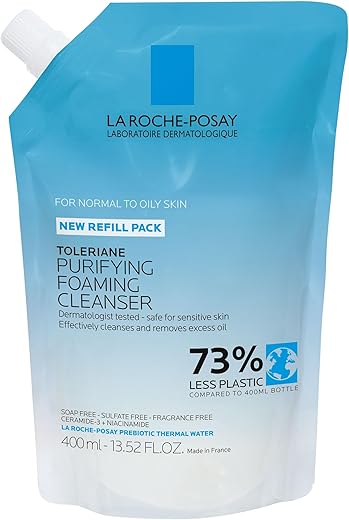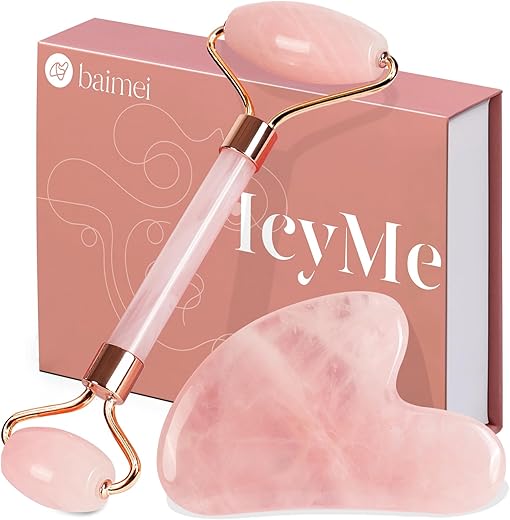
Common Mistakes to Avoid When Using a Facial Clay Mask for Deep Cleansing
We’ve all been there – eagerly applying a facial clay mask, hoping for a deep cleanse and rejuvenated skin, only to be left disappointed with lackluster results. But fear not, because we’re here to help you avoid those common mistakes that can hinder the effectiveness of your clay mask. Whether you’re a skincare enthusiast or a newbie in the world of clay masks, this blog post will guide you through the do’s and don’ts, ensuring you get the most out of your deep cleansing experience. So, let’s dive in and discover the secrets to flawless, radiant skin!
Purify and rejuvenate your skin with our top-selling clay masks






What is a Facial Clay Mask?
A facial clay mask is a skincare product that is applied to the face to deep cleanse the skin. It is made from various types of clay, such as kaolin clay, bentonite clay, or French green clay, which are known for their absorbent properties. When applied to the skin, the mask helps to draw out impurities, unclog pores, and remove excess oil, leaving the skin clean and refreshed.


How does it work?
The clay in a facial clay mask works by absorbing excess oil and impurities from the skin. When the mask is applied, it forms a thin layer that dries and hardens over time. As it dries, the clay draws out dirt, toxins, and other impurities from the skin, which are then rinsed away when the mask is removed.
Benefits of using a Facial Clay Mask
Using a facial clay mask as part of your skincare routine can provide several benefits for your skin. Here are some of the key benefits:
- Deep cleansing: The absorbent properties of the clay help to remove dirt, toxins, and excess oil from the skin, leaving it thoroughly cleansed.
- Unclogging pores: Clay masks have the ability to unclog pores by drawing out impurities, making them a great option for those with oily or acne-prone skin.
- Exfoliation: When the mask is removed, it also helps to remove dead skin cells, promoting a smoother and more radiant complexion.
- Oil control: The clay in facial masks absorbs excess oil from the skin, helping to control shine and reduce the appearance of oily skin.
- Tightening and toning: Regular use of a clay mask can help to tighten and tone the skin, reducing the appearance of pores and giving the skin a more youthful and rejuvenated look.
Popular types of clay masks
There are various types of clay masks available, each with its own unique properties and benefits. Here are some popular types of clay masks:
- Kaolin clay mask: Kaolin clay is known for its gentle exfoliating properties and is suitable for all skin types. It helps to absorb excess oil without drying out the skin.
- Bentonite clay mask: Bentonite clay is highly absorbent and beneficial for oily and acne-prone skin. It helps to remove impurities, reduce inflammation, and calm irritated skin.
- French green clay mask: French green clay is rich in minerals and has detoxifying properties. It helps to purify the skin, tighten pores, and improve overall skin tone.
- Rhassoul clay mask: Rhassoul clay is a mineral-rich clay that is known for its ability to soften and smooth the skin. It helps to remove impurities, improve texture, and promote a healthy complexion.
How to use a Facial Clay Mask
To get the most out of your facial clay mask, it’s important to follow these steps:
- Start with clean, dry skin: Wash your face with a gentle cleanser and pat it dry before applying the mask.
- Apply a thin layer: Using clean fingers or a brush, apply a thin and even layer of the clay mask to your face, avoiding the eye area.
- Leave it on for the recommended time: Different clay masks have varying recommended times for leaving them on. Follow the instructions on the packaging to avoid over-drying or irritating your skin.
- Rinse off thoroughly: Use lukewarm water to gently rinse off the mask, making sure to remove all traces of clay. Pat your skin dry with a clean towel.
- Follow up with a moisturizer: After using a clay mask, it’s important to replenish moisture in the skin. Apply a lightweight moisturizer to keep your skin hydrated.
Mistake #1: Choosing the Wrong Clay Mask for Your Skin Type
When it comes to achieving flawless, glowing skin, incorporating a clay mask into your skincare routine is a game-changer. Clay masks are renowned for their ability to deeply cleanse, purify, and rejuvenate the skin. However, one common mistake that many people make is choosing the wrong clay mask for their skin type. This can lead to ineffective results or even potential skin irritations.


Understanding Your Skin Type
Before delving into the world of clay masks, it’s important to understand your skin type. This will help you choose the right clay mask that addresses your specific concerns and provides optimal benefits. Here are the different skin types and their characteristics:
- Dry Skin: Dry skin tends to feel tight, rough, and may have flaky patches. It lacks moisture and can be prone to fine lines and wrinkles.
- Oily Skin: Oily skin is characterized by excessive sebum production, resulting in a shiny appearance. It is prone to enlarged pores, acne breakouts, and blackheads.
- Combination Skin: Combination skin is a mix of both dry and oily skin. The T-zone (forehead, nose, and chin) is usually oily, while the cheeks and other areas may be dry.
- Sensitive Skin: Sensitive skin is easily irritated and prone to redness, itching, and reactions to certain ingredients. It requires gentle and soothing products.
Types of Clay Masks
There are various types of clay masks available, each with unique properties and benefits. Let’s explore the most common ones:
- Kaolin Clay: Kaolin clay is gentle and suitable for all skin types. It is ideal for sensitive and dry skin as it doesn’t strip away natural oils. It purifies and soothes the skin, leaving it refreshed and nourished.
- Bentonite Clay: Bentonite clay is highly absorbent and beneficial for oily and acne-prone skin. It effectively draws out impurities, unclogs pores, and controls excess oil production. However, it may be too drying for dry or sensitive skin.
- French Green Clay: French green clay is rich in minerals and detoxifying properties. It is excellent for oily and combination skin as it absorbs excess oil, tightens pores, and promotes a matte complexion.
- Rhassoul Clay: Rhassoul clay is known for its exfoliating and softening effects on the skin. It works well for all skin types, including sensitive skin. It gently removes dead skin cells, unclogs pores, and improves texture.
Choosing the Right Clay Mask for Your Skin Type
Now that you’re familiar with the different clay masks and their benefits, it’s time to choose the perfect one for your skin type. Consider the following tips:
- Dry Skin: Opt for clay masks with hydrating ingredients like aloe vera or honey. Look for masks that have kaolin clay as it provides gentle purification without drying out the skin.
- Oily Skin: Bentonite clay masks are ideal for oily skin due to their oil-absorbing properties. Look for masks that contain ingredients like tea tree oil or witch hazel for added benefits.
- Combination Skin: Choose a clay mask that is suitable for both dry and oily skin. French green clay or rhassoul clay masks work well for combination skin types.
- Sensitive Skin: Look for clay masks that are fragrance-free and formulated with soothing ingredients like chamomile or oatmeal. Kaolin clay or rhassoul clay masks are gentle options for sensitive skin.
Mistake #2: Applying the Mask Incorrectly
When it comes to using a facial clay mask, proper application is key to reaping its full benefits. Many people make the mistake of applying the mask incorrectly, which can lead to ineffective results or even skin irritation. In this section, we will guide you through the step-by-step process of applying and removing a facial clay mask correctly, ensuring that you get the most out of your skincare routine.



Step-by-Step Guide for Proper Application
Step 1: Cleanse and Exfoliate
Before applying the clay mask, it is important to start with a clean canvas. Use a gentle cleanser to remove any dirt, oil, or makeup from your face. This will allow the mask to penetrate deeply into your pores and remove impurities effectively. Additionally, exfoliating beforehand will help to slough off dead skin cells, allowing the mask to work even better.
Step 2: Choose the Right Mask for Your Skin Type
Not all clay masks are created equal, and different types of clay work best for different skin types. Here are some popular clay types and their benefits:
- Kaolin Clay: Ideal for sensitive or dry skin due to its gentle nature.
- Bentonite Clay: Great for oily or acne-prone skin, as it helps to absorb excess oil and unclog pores.
- French Green Clay: Perfect for combination skin, as it can balance oil production while detoxifying the skin.
- Rhassoul Clay: Suitable for all skin types, this clay helps to improve skin texture and clarity.
Choose the clay mask that matches your specific skin type and concerns for optimal results.
Step 3: Apply a Thin, Even Layer
Using a clean brush or your fingertips, apply a thin, even layer of the clay mask to your face. Avoid applying the mask too close to the eye area or on open wounds. Make sure to cover your entire face, neck, and decolletage if desired. Applying a thicker layer doesn’t mean better results, as it may take longer to dry and can be more difficult to remove.
Step 4: Let it Dry
Allow the mask to dry completely on your face. This typically takes around 10-15 minutes but can vary depending on the specific mask you are using. Avoid touching or moving your face while the mask is drying to prevent any smudging or uneven application.
Step 5: Remove the Mask
Once the mask is dry, it’s time to remove it. Follow these steps for a gentle and effective removal:
- Wet a clean washcloth or sponge with warm water.
- Gently press the damp cloth onto your face and let it sit for a few seconds to soften the mask.
- Slowly and carefully wipe away the mask using gentle circular motions.
- Rinse your face with lukewarm water to ensure all traces of the mask are removed.
- Pat your skin dry with a clean towel.
Benefits of Correctly Applying a Clay Mask
Properly applying a clay mask offers numerous benefits for your skin, including:
- Deep cleansing: Clay masks have the ability to draw out impurities and excess oil from deep within your pores, leaving your skin feeling clean and refreshed.
- Detoxification: By removing toxins and pollutants from your skin, clay masks help to purify and detoxify, leaving your complexion brighter and healthier-looking.
- Exfoliation: The application and removal process of clay masks also provides a gentle exfoliation, helping to remove dead skin cells and promote a smoother, more radiant complexion.
- Skin tightening: Clay masks have a toning effect on the skin, helping to reduce the appearance of pores and give your skin a firmer, more youthful appearance.
By following the correct application techniques, you can enhance these benefits and achieve the best possible results for your skin.
Remember, using a facial clay mask should be a relaxing and enjoyable experience. With the proper application, you can elevate your skincare routine to new heights and achieve a clearer, healthier complexion. So, take your time, choose the right mask for your skin type, and embrace the benefits of a properly applied clay mask.
Key Takeaways for Effective Facial Clay Mask Application
In conclusion, by understanding and avoiding these common mistakes, you can maximize the effectiveness of your facial clay mask for deep cleansing. Taking the time to properly select, apply, and follow the guidelines for use will ensure that you achieve the best possible results for your skin. Remember to always listen to your skin’s needs and make adjustments to your skincare routine as necessary. With these tips in mind, you can maintain healthy and radiant skin.

Hey, I’m Ava Wilson—a skincare enthusiast and a certified esthetician. I’m dedicated to sharing my knowledge and empowering others to achieve healthy, glowing skin through simple, effective routines and natural remedies. Join me on this exciting skincare journey, and let’s unlock your skin’s potential for a confident, beautiful you.





